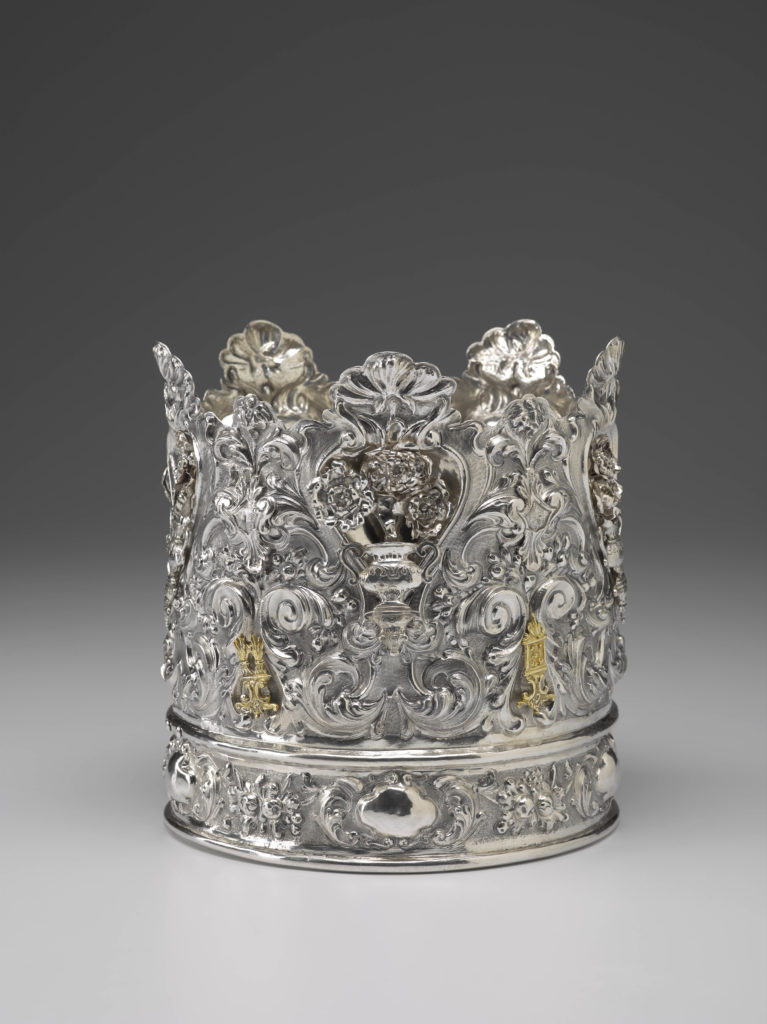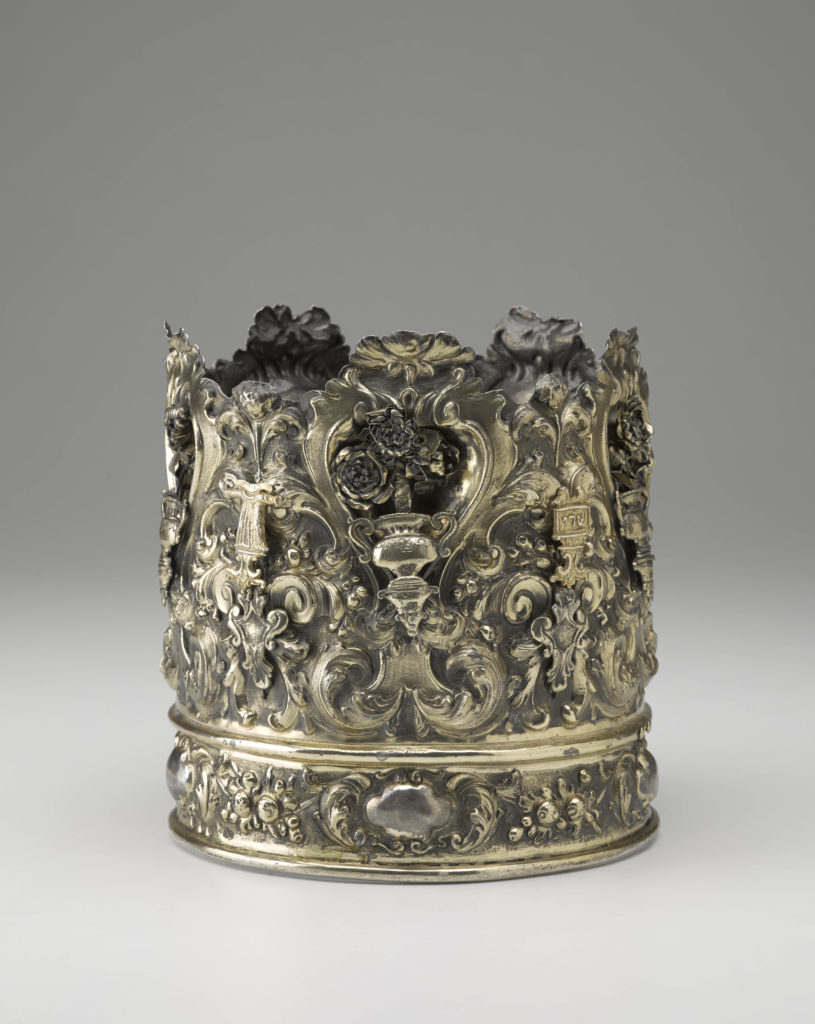Torah Crown (work of art)
Artwork Info
Key Ideas
- This elaborate silver piece is decorated through the process known as repoussé (re-poo-say), from the French word meaning to “push forward.” This technique requires the artist or artisan to use a hammer and series of metal punches, to work the silver from the reverse side in order to “push” or raise the metal on its facing side.
- A Torah crown is placed on top of a Torah scroll and surrounds both of the wooden scroll handles, or staves, above the Torah cover or mantle. The crown or keter (keh-ter) is a common symbol. It signifies royalty and the importance of the Torah in Jewish life and culture. It also refers to the idea of God’s sovereignty or status as “ruler of the world” in the Jewish faith.
- Until 1861 the country of Italy had existed for hundreds of years as a collection of “city-states” or separate duchies or kingdoms and not as a unified country. In 1861 these separate entities became the Kingdom of Italy.
Learn More
This crown was once part of an ensemble of ornaments that adorned a sacred Torah scroll. The gilded attachments depict items associated with the ancient Temple in Jerusalem, including the special garments worn by the Temple priests. Hands raised in blessing refer to a special “priestly blessing” that is recited as part of the synagogue service. It is also recited by parents, to bless their children as part of the weekly, at-home Friday night Kiddish, and to usher in the beginning of the Sabbath.
Additional Resources
Resources for Teachers:
- Learn more about the techniques and tools of repoussé and a related technique of chasing.
- Read more about all the ornaments, including the crown, used in the reading and ornamentation (dressing) of a Torah scroll.
Resources for Students:
- View a similar Venetian Torah crown (made in about the same time period) from the Metropolitan Museum of Art.
- Watch a video to see a short demonstration of the repoussé technique.


